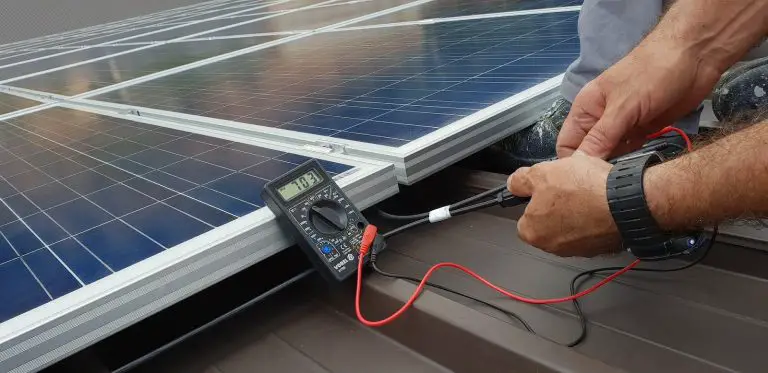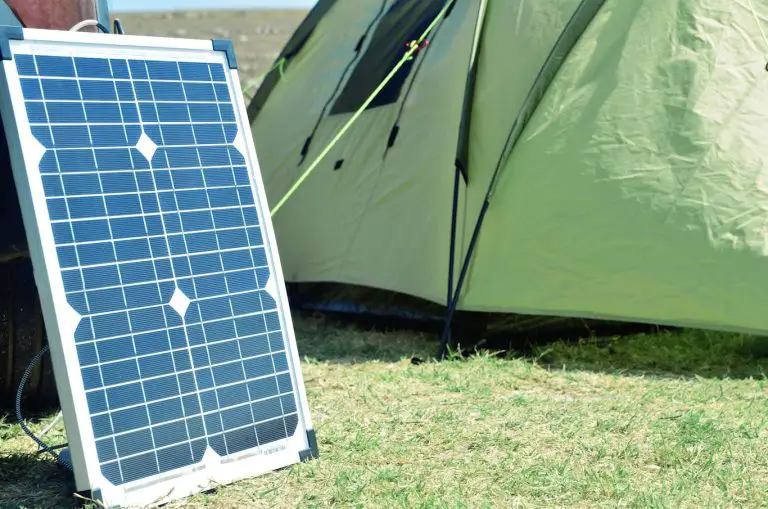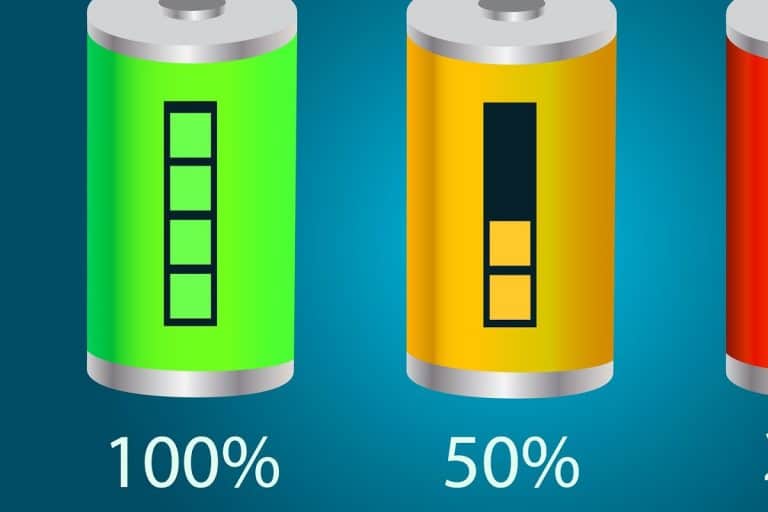Can a Solar Panel Overcharge a Battery?
A solar panel can overcharge a battery if there is no charge controller attached to the battery to regulate the voltage and current coming from the solar panels. Most solar panels put out 16–20 volts, so if there is no regulation from the charge controller, a 12-volt battery will be damaged from overcharging.
Using the power of the sun is a fast and efficient way of recharging your batteries. Portable solar chargers are an excellent way to keep your devices charged if you are camping or hiking and away from the standard grid. However, you might wonder if a solar panel can damage the battery by overcharging.
Using solar power to recharge your devices is an easy and environmentally friendly way to stay connected. However, some knowledge of batteries, their voltage, and how a solar panel charges a battery is required before doing so. I’ll take a closer look at charging a battery with a solar panel and the best way to do it safely.
How Does a Solar Panel Recharge a Battery?
Batteries come in all shapes and sizes, from small household alkaline batteries, which have a cell voltage of 1.5 volts, and lithium-ion batteries used in mobile phones, with a cell voltage of 3.7 volts, to car batteries, which have a voltage of 12.8 volts.
Solar panels convert sunlight into direct current (DC) electricity, which is used to charge the battery.
Solar panels are generally designed to create an output of 12 volts of direct current. If you are using a solar panel to charge a mobile phone battery of only 3.7 volts, the solar panel will damage the battery if a solar charge controller is not used.
How Long Does It Take to Recharge a Battery with a Solar Panel?
The length of time it takes to recharge a battery with a solar panel depends on the size of the battery. In order to charge a battery with a solar panel in the most effective way, the solar panels must be placed in direct sunlight. This will maximize the amount of current produced by the panels and speed up the recharging time.
Keep in mind that if a large amount of current is required, several panels can be used to harness more sunlight and create more energy. The panels should be placed in series, and a solar charge controller should be used to prevent the battery from being overcharged.
What Is a Solar Charge Controller?
A solar charge controller, also called a solar charge regulator, is a voltage or current regulator that stops batteries from overcharging and being damaged by regulating the voltage and current from the panels going to the battery.
While most solar panels are designed to create 12 volts of direct current, they usually produce between 16 and 20 volts. Most large batteries, such as car batteries, need around 14 to 14.5 volts to get fully charged, so a solar charge controller would not be necessary.
It is essential to use a solar charge controller when recharging smaller devices like mobile phones, speakers, and headphones, however, as they produce a small voltage and can be easily damaged if overcharged.
The need for a solar charge controller would also depend on the solar panel size used to recharge the battery. Solar panels are available in different sizes, so you can buy one in the correct size for your needs.
Portable solar chargers that are used to charge small devices have a small solar panel and a built-in solar charge regulator, which automatically turns off when the device is recharged to protect the device from damage.
Portable solar chargers are ideal for keeping your devices like mobile phones and flashlights recharged when you are hiking or camping in the wilderness and not connected to or near the main grid.
How a Solar Charge Controller Prevents Overcharge
A charge controller is a critical part of any system that is used to recharge a battery, whether it is solar panels, wind, water, fuel, or the utility grid. The charge controller keeps deep-cycle batteries adequately charged, in good condition, and safe to use.
A solar charge controller can prevent a battery from overcharging by blocking reverse current and preventing the battery from absorbing too much current. Some solar controllers can also prevent over-discharge in a battery, protect it from electrical overload, and display the flow and power, as well as the status of the battery.
Blocking Reverse Current
A solar panel works by converting sunlight into direct current and pumping it through the battery in one direction only. At night, when there is no light, the solar panels may pass a small amount of current in the opposite direction, causing a slight discharge from the battery.
Semiconductor
While the loss of current during reverse discharging is quite small, it still takes some power away from the battery, but it is easy to prevent.
Most solar charge controllers have semiconductors (transistors) in the system, which act like a valve to control the current. A semiconductor only allows current to pass through in one direction, thus preventing reverse current and the resulting loss of power.
Relay Switch
Some older solar panel charge controllers use a relay switch to block reverse current. This system is made up of an electromagnetic coil, which opens and closes a mechanical switch called a relay.
These relay switches, sometimes also called shunt controllers, switch off at night when there is no direct sunlight to block reverse current.
Blocking Diode
If a solar panel is used to only trickle-charge a battery, a charge controller may not be needed. Trickle-charging is when a battery is charged very slowly by means of a very small amount of current, i.e., a “trickle.”
In this case, a simple “blocking diode” can be installed into the solar panel to block reverse current and prevent the battery from overcharging.
While trickle-charging a battery may take much longer than charging it at a normal rate, it is still possible to overcharge a battery with a solar panel even when utilizing trickle charging, so preventative measures should be taken to keep the battery in good working condition.
Preventing Overcharge
As soon as a battery reaches full charge, it can no longer store any further incoming current. With continuously applied energy at a full rate, the battery’s voltage becomes too high, and the battery can be overcharged. The battery begins to degrade rapidly, overheat, and may possibly explode.
Preventing a battery from overcharging and causing any damage can be done by simply reducing the flow of current to the battery from the solar panel when the battery reaches a specific voltage. A solar charge controller does this automatically.
A solar charge controller will prevent a battery from becoming overcharged by dropping the voltage according to the charge on the battery. This is called “voltage regulating,” and it is the most important function of a solar charge controller. The controller checks the voltage and regulates the battery charging accordingly.
Some solar charge controllers may regulate the flow of energy to the battery by switching the current fully on or fully off, while others may reduce the current gradually — both these methods of reducing current to prevent the battery from overcharging work well.
Overload Protection
When the current flowing through a circuit is higher than it can safely handle, it becomes overloaded. Similarly, overload can happen in the circuit of a battery, and this overload can cause the battery or the circuit to overheat and even ignite into flames, becoming a fire hazard.
Overload can also be caused by a short circuit or a fault in the wiring. Some solar charge controllers have built-in overload protection and can be maintained with a push-button reset. It is important to keep the solar charge controller in good working condition to prevent a battery from overcharging.
Displays, Metering, and Power Panels
Another way of monitoring whether a solar charge controller is in peak working condition and preventing a battery from overcharging is via a display, power panel, or metering system. Most solar charge controllers include some type of display, ranging from a single red light to digital displays of voltage and current.
A display system can indicate the power flow into and out of the system, the state of charge of the battery, and when various charging limits are reached, thus preventing overcharging and damage to the battery.
Additionally, many solar panel systems will have other built-in ways of dealing with excess power generated once the solar batteries are full.
Final Thoughts
While it is possible to overcharge a battery with a solar panel, it can be prevented using a high-quality solar charge controller. Maintaining control of solar battery charging is essential to prevent the battery from overcharging and to ensure that it is kept in an optimal condition for the longest possible lifespan. A good solar charge controller can do this.
Solar panels are a fast and efficient way to recharge batteries, no matter what size, and they are a great way for keeping small devices, such as headlamps, headphones, and mobiles recharged when off the main grid.







